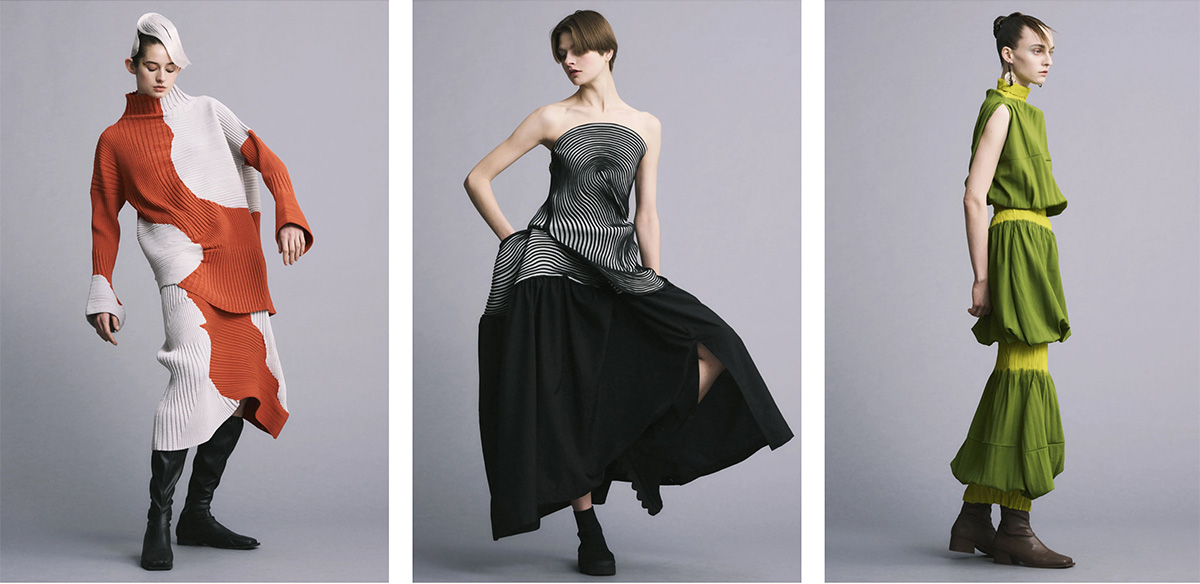“Never one to embrace trends, Miyake’s dynamic spirit was driven by a relentless curiosity and desire to convey joy through the medium of design. Always a pioneer, Miyake both embraced traditional handcrafts but also looked to the next solution: the newest technology driven by research and development” – Issey Miyake Press Release

Miyake was born on April 22nd, 1938 in Hiroshima, Japan. At the young age of 7, he survived the atomic bombing of his hometown. However, his mom passed soon after from radiation poisoning. Miyake was known to not speak much of this traumatic incident, resisting being known as, “the designer who survived the atomic bomb.”
“I have tried, albeit unsuccessfully, to put them behind me, preferring to think of things that can be created, not destroyed, and that bring beauty and joy.” – Issey Miyake
Miyake attended Tama Art University in Tokyo for graphic design before shifting focus to fashion in Paris and New York in the 1960s. While studying fashion, Miyake was the apprentice for Guy Laroche, leading to his eventual position for Hubert de Givenchy. He founded the Miyake Design Studio in 1970. Through his collections, he became known as the designer who merged art, fashion, and technology — as his high heat technology made his pleating durable, even through wash cycles.
Beginning in 1993, his innovative technology curated his most infamous line: Pleats Please. The inspiration for this line evolved after Miyake’s costume designs for the William Forsythe’s Frankfurt Ballet company in 1991 in which he created pleats for constant movement. Miyake also found movement vital in his show formats, truly building upon his immense legacy. The revolutionary design of his micro pleating would continue in his future collections. The increase in popularity showcased his designs in versatile places from the workplace to dance clubs to daily life.
Miyake continued to create genderless, elegant designs that surged in popularity. Co-founder of Apple, Steve Jobs, wore Miyake’s sleek black turtleneck sweater, turning many heads as the fashion and art world shifted. The inspiring designer made at least 100 sweaters for Jobs around $175 each, retiring the line in 2011 when Jobs passed.
While it is unclear who Miyake is survived by, as he led a very private personal life, he found his passion within human connection and the process of creating. He cherished his authentic, life-long friendships with co-workers and team creatives. Miyake also found clothing to be art, adding to his fuel for creating designs that never fade in style, but capture a timeless essence.
“Anything that’s ‘in fashion’ goes out of style too quickly. I don’t make fashion. I make clothes,” – Issey Miyake


